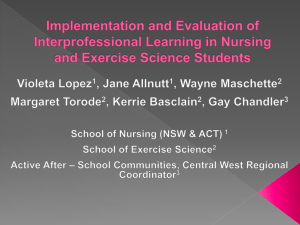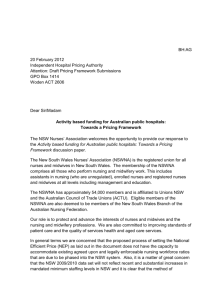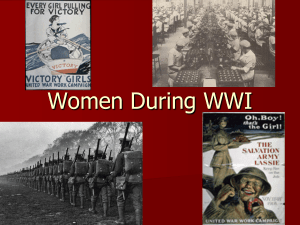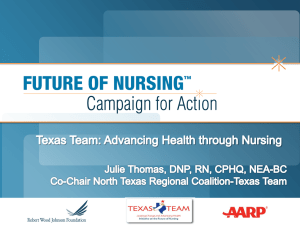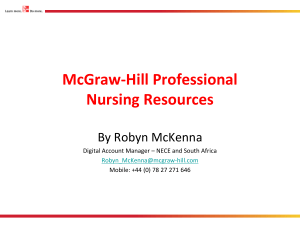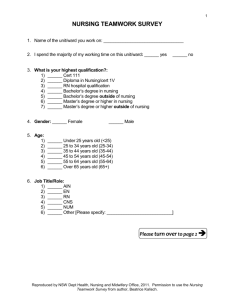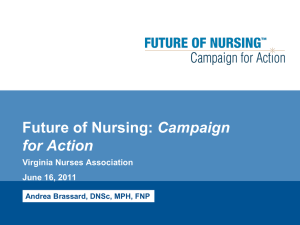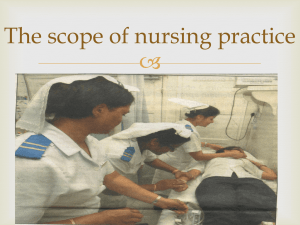Ways of Working in Nursing and Midwifery
advertisement
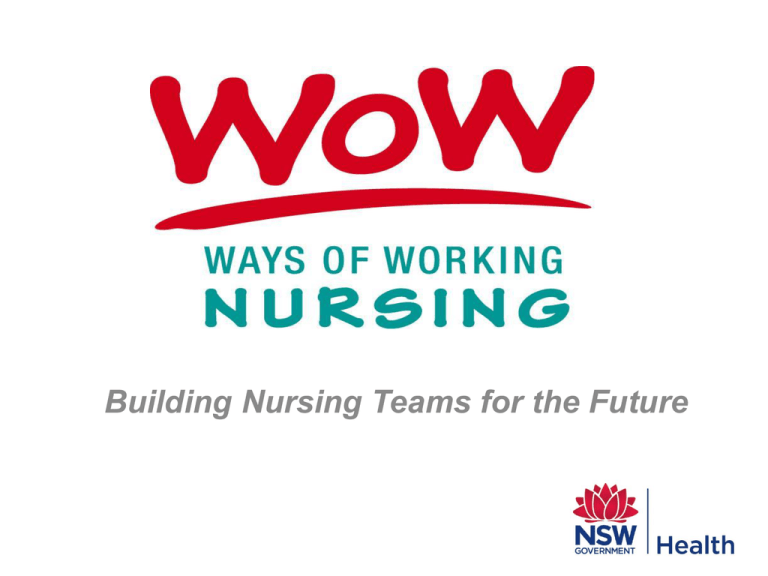
Building Nursing Teams for the Future Why should nurses consider examining the way we organise our nursing care? We are experiencing changes in our nursing workforce including: The introduction of different levels of nurses An aging workforce and An increasing number of novice practitioners. All will have an impact on the workforce of tomorrow The healthcare environment in which we work has altered over the last decade We are now exposed to: An increase in patient acuity An increased number of patients with one or more chronic conditions and associated co-morbidities Improved care and treatment has led to a reduced length of stay and a high patient turnover Rapidly expanding medical and technical breakthroughs resulting in an increased complexity and need for specialty care. Consequently, acute care hospitals are busy places accommodating sicker patients requiring more intensive treatments necessitating coordinated and expert nursing care A key recommendation (45) of the Garling Report identified that state-wide principles of best practice for the supervision of junior clinicians should be developed Clinical leaders must build a culture where all staff assume the role of supervision in the interests of the patient. First year RNs and nurses new to the ward/unit require support and supervision from more experienced nurses The Bureau of health Information (BHI) Insights Into Care Report looks closely at the care experiences of the one million patients who spend a day, or one or more nights, in NSW public hospitals each year. The report states that: staff teamwork and courtesy of nurses matter most to patients across NSW Bureau of Health Information (2010) Insights into Care: Patients’ Perspectives on NSW Public Hospitals Sydney. Available at http://www.bhi.nsw.gov.au/__data/assets/pdf_file/0004/117841/BHI-InsightsIntoCare-MainReport2010.pdf In a “nut shell” Acute care hospitals are busy places accommodating sicker patients who require more intensive treatments requiring coordinated and expert nursing care Need to recruit and retain nurses in the system First year RNs require support and supervision during their first critical year of practice Nurses new to the ward/unit require support and guidance Staff teamwork and courtesy of nurses matter most to patients across NSW. Therefore, nurses today need to support and grow the workforce of the future by ensuring that not only the ‘science’ but also the ‘art’ of nursing is supported through the way that work is organised What is the WOW project? NSW Health Nursing and Midwifery Office commenced the WOW Project in 2010 The project explored the ways in which nurses organise their clinical work. WOW project findings Site visits and discussions with a number of nurses and other key stakeholders were conducted across NSW to gain an understanding of the variety of ways that work is organised at the ward/unit level. A number of WOW have been identified: – – – – – – – Patient allocation Allocation in teams Task or functional Modular Primary Nursing Case management Team. More collaborative approaches will help to build future nurses’ skills and capabilities A Collaborative Nursing Model requires teamwork Teamwork requires: 1. 2. A clear vision for the future Team member’s roles are clearly defined and all team members know what their jobs are 3. Open and clear communication 4. Effective decision making 5. Balanced participation ensures that everyone on the team is fully involved. ‘Without participation you don’t have a team, you have a group of bodies’ 6. Valued diversity where team members are valued for the contributions that they bring to the team 7. Managed conflict ensures that problems are not ‘swept under the rug’ 8. Positive atmosphere with trust being the most important ingredient 9. Cooperative relationships where there is a sense of belonging and a willingness to make things work for the good of the whole team 10. Participative leadership where leaders share the responsibility and the glory, are supportive and fair, create a climate of trust and openness and are good coaches and teachers. How can you implement a Collaborative Nursing Model in your ward/unit? The WOW Resource: Introduces the evidence for considering a CNM in your ward/unit Provides guidelines for implementing a CNM in your ward/unit Provides an audiovisual representation of nurses working collaboratively – Making it Real Provides tools that can be used to support and evaluate a CNM. Available on the intranet at http://www.health.nsw.gov.au/nursing/projects/WOW.asp

